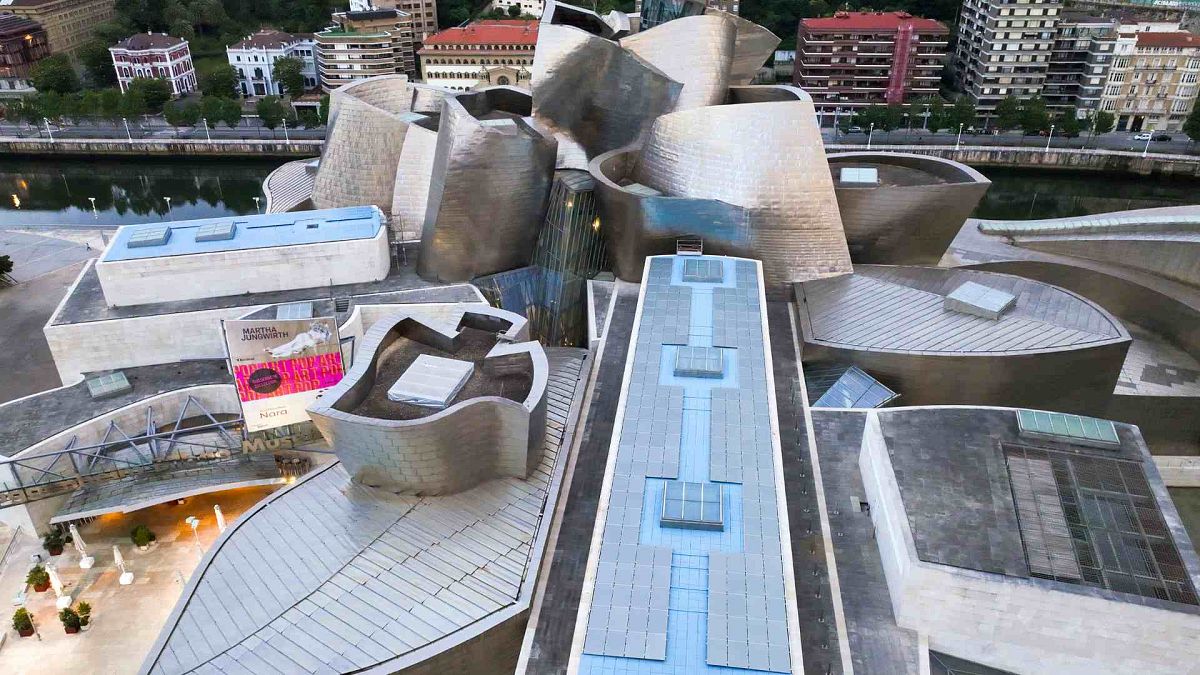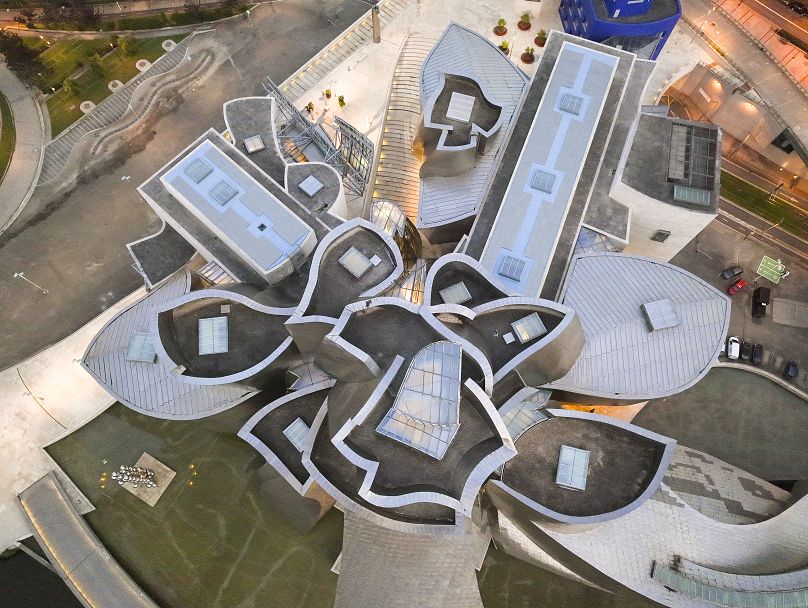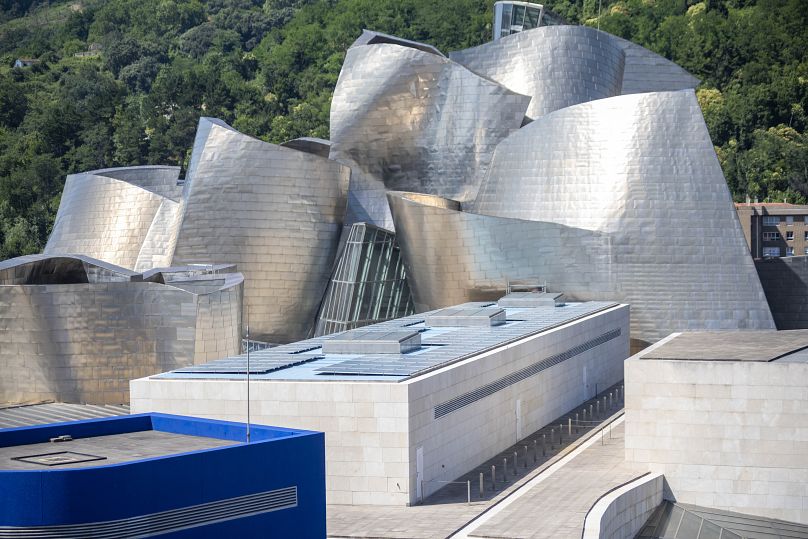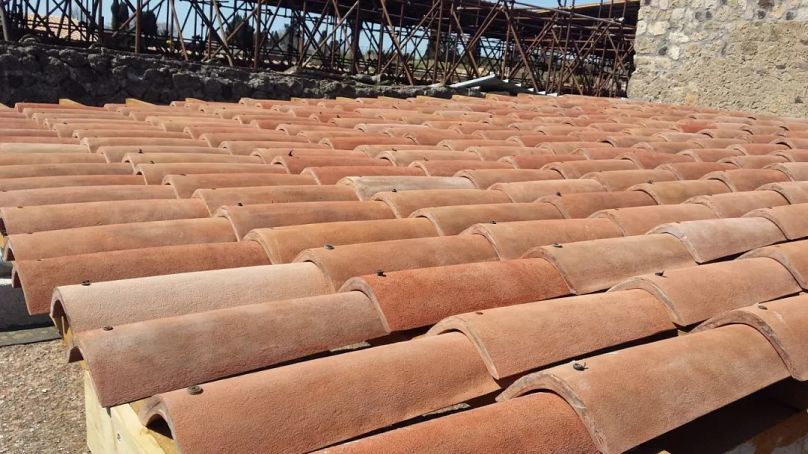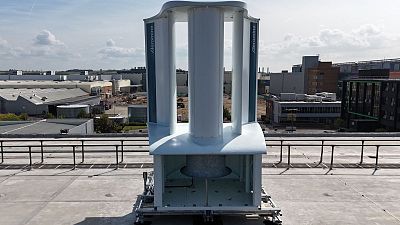With the need for green energy increasing, many historic buildings around Europe have been fitted with solar panels using innovative and creative techniques.
The Guggenheim Museum in Bilbao, Spain, has just installed 300 solar panels on its roof - part of its commitment to be climate neutral by 2030.
The 80 kW photovoltaic installation will save around 5 per cent of the museum's electricity consumption and supply enough power to light its exhibition halls.
But the modernist building by renowned architect Frank Gehry posed unique challenges for integrating the panels onto the roofs.
To preserve the architectural integrity of the iconic structure, the colour and design of the panels had to be carefully selected and approved.
With the need for green energy increasing, many historic buildings around Europe have been fitted with solar panels using innovative and creative techniques.
Guggenheim Bilbao Museum fitted with solar panels
Gehry’s structure is renowned for undulating forms and silvery metallic cladding - something the solar panels needed to avoid disrupting.
Iberdrola, the company behind the installation, placed the panels on two of the building’s largest roofs in a position that means they are not visible from the street.
The model selected was manufactured by Italian company FuturaSun and is chromatically compliant with the architecture.
“Preserving the building’s architectural uniqueness was a major challenge in the implementation of this project, and all details - from the design of the installation to the harmonisation with other features, such as the skylights - were approved by architect Frank Gehry and the City of Bilbao,” the museum said in a press release.
Can solar panels be fitted to historic buildings?
Elsewhere in Europe, solar panels have been discretely installed on or around historic buildings.
At Chippenham Hall in England, 32 ground-mounted solar panels now lie some 25 metres away from the building on the grounds.
They are connected to the house by underground cabling and hidden from view by a hedge that is in keeping with the style of other arboreal features in the gardens.
Last year, the archaeological park of Pompeii in southern Italy installed solar panels disguised as terracotta tiles that blend in with the ancient ruins of the city.
However, other examples of retrofitting an iconic historic building have caused controversy.
PV panels were proposed for the grade I listed King’s College Chapel in Cambridge. The installation received approval from the planning committee, despite objection from Historic England and a recommended refusal from planning officers.
The 438 solar panels on the roof are visible from the street. But those in favour are praising them as a symbol of change.
Gillian Tett, the provost of King’s College, told Bloomberg that this is just one more change in 500 years of alterations made to the chapel.
“When King Henry VIII put the whole chapel up, no one could imagine having a chapel like this with all these extraordinary roofs, these gothic ceilings. It was impossible to visualise. And that’s kind of what we’re trying to do again,” she said.
European city councils relax rules for solar panels on historic buildings
As the need for clean energy grows amid the climate crisis and rising costs, cases like that of King’s College Chapel might become the norm.
City councils around Europe have begun loosening restrictions so that swathes of rooftops can become sites for solar panels (nearly a quarter of buildings in the EU pre-date 1945).
In June, the city of Amsterdam announced that solar panels in full view will be permitted on protected buildings and monuments by 2025.
Earlier this year, the UK government ruled that owners of historic houses in England will no longer have to apply for permission to install energy-efficient technology like solar panels and heat pumps under the measures proposed by the housing department.
While this may prompt concerns over heritage conservation, companies are simultaneously working to produce solar panels that blend more subtly with historic buildings.
Called building integrated photovoltaics (BIPV), these do not sit on top of building surfaces but replace elements like the roof, skylights or façades.
They can take on the appearance of roof tiles, slate, glass and even stained glass meaning historic buildings can benefit from reduced energy costs and improved sustainability without sacrificing aesthetic integrity.












